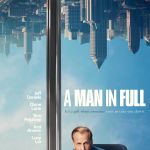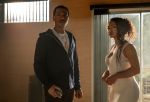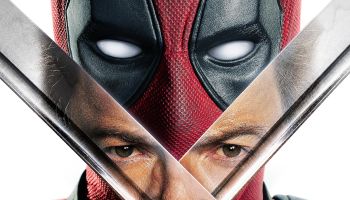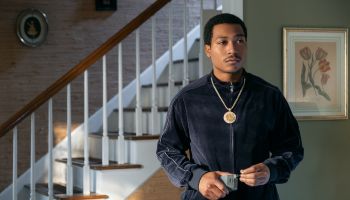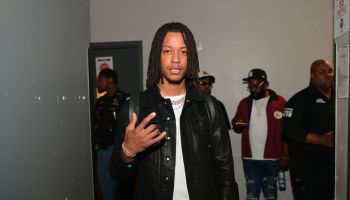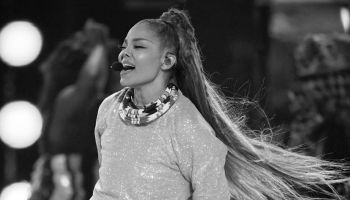A good friend of ours turned us onto Brooklyn based men’s and sportswear designer Alexander Campaz, and after taking a look at his website, we fell in love with his clothes.
So of course, we had to meet the Cooper Union graduate to learn about his aesthetics and philosophy behind his line which includes sweatshirts and scarves made from re-purposed materials.
STORY: Derek Lam To Sue Ivanka Trump!
Campaz, who is Colombian, grew up in Queens and studied art and philosophy at Cooper Union. A positive response to a winning thesis project convinced him that he should try his hand a designing clothes.
His line has been running for about two years, is sold locally and internationally and is getting attention, most recently by the Tricia Brown Dance Company.
Buy Alexander Campaz Collection Here
What we loved about Campaz’s take on streetwear and menswear is his great love and sense of color, history, geometry and his ability to transform something as mundane as sweatshirt into a work of art. Looking at his collection will trigger memories of football for some, but the bulk of his customers run the gamut from skate and snowboard kids to bankers.
Check out our exclusive with Campaz below!
GlobalGrind: Who is your customer?
Alexander Campaz: When I make something I am never thinking about what or who my market is. I look at it as an aesthetic, a reference to me. I realize that there are different groups that gravitate towards it for different reasons. And then there are older people who look at it and think ‘That reminds me of what I wore when I was a teenager, and I want that because that is a reference to my time.’
[pagebreak]
Where did you go to school?
Cooper Union, I studied art but I did a lot of philosophy. Philosophy was my interest when I was there. For my thesis show I made burlap suits and it was a reference toward a particular time when Portugal and Spain were super powerful and were going to divide the world up. They had ships around the world and when they met on the other side they were going to sign this treaty that would split the world in half. So I made these suits out of burlap and that was my thesis show. After that people were like, ‘Hey, man this stuff is good! You should try making clothes.’
I worked for Cooper Union for three years and when I got out I decided to start my own thing.
Where did you grow up?
I grew up in Queens, in two different parts. First in Fresh Meadows, which is really out there, and then Elmhurst/Jackson Heights. That was one of the powerful influences for me, growing up in Queens, just economically. I had friends that lived in Jamaica and those kids had money. Then I had friends who grew up in Corona who have no money… but it was because I used to skate. We would drive through Jamaica and see these huge houses and my friends were living in buildings, apartments stacked on apartments so it was different. Queens was a good experience for me, thinking about it now. All my friends came from different places, they were Chinese, Jewish, black and Anglo. To me, all of us pretty much comprised Queens. Queens is the most diverse Borough, I think. I read an article about the Vocabularies, languages spoken in Queens.
[pagebreak]
You’ve only done menswear, shirts and scarves?
Yes. The collection has fluctuated. Before I was doing more casual wear, a lot of button tops and jackets, and even pants. Now, it is more of a formal casual line. It was more about textures and fabrics that I was using. I was using recycled hems and bamboo denim twills but then it was more about what I can actually produce, me personally. It has always been about, for better or worse, micro managing everything so I have to make everything. I have to make the patterns. I have to sew everything up! I went from there, dealing with more fabrics but went to the other direction and focused on this which was more about geometry, more about color blocking and my interest when I was a kid.
At the same time I was thinking about this, in my drawings, I went backwards. I started drawing more the way I used to draw when I was 15. At the same time I started thinking about my influences and that is where this came about. I just focused on t-shirts, sweaters, hoodies and scarves, basically, just making everything pop.
[pagebreak]
I see you have mostly smalls and medium sizes.
Yes.
Why just these sizes?
I carry all sizes, but just from experience, what I notice is medium-large is my range. It has more to do with the fit. I use myself for the fit. I don’t have a fit model so I tend to make clothes that are fitting and so, for whatever reason, those two sizes are more prevalent. Those are the sizes that I sell the most. So small and extra larges, for any three or four that I sell of medium/large, I probably sell just one or two in those sizes. It is kind of like what I have noticed, particularly for sweat shirts, if you buy a large sweat shirt they are always boxy and big. Your sleeves are bulging so it is hard to find something that just fits well. If you are a small, and you wear a small sweatshirt, you might be able to get away with it being tight. It is a slim fit! I think that once people put it on, guys like me and guys like you, they feel comfortable in that fit.
How did you print this pattern?
I use illustrator and then I make a pattern, then after that you print it on a film. Then you burn it on a screen so to print it on fabric. When you print on fabric it is very good for that. I let it dry overnight, then I heat press it so it sets into the fabric, then I cut and and sew it.
[pagebreak]
How long does it take to make one sweatshirt?
The thing is, I do it in blocks, I never just do one. So, lets say on a Monday early in the morning, I screen print that that day. I’ll print like 50 sheets and after that I will let them dry, the following day I will heat them. So lets say that is done by mid-day. That’s 50; then I I cut everything, and then weds I sew it and by Thursday; they should be done by Friday evening. So five days. Then you have to iron them.
Why did you choose Bed-Stuy as a base?
Well, I work from my basement where I have my studio so it is just out of convenience. But, to be honest, I moved in to Bed-Stuy in 2002 and I was still in school. The older I’ve got, it just seems like everything I do is in Brooklyn so it is becoming more of a convenience. All of my friends are in Brooklyn, and everything I do revolves around Brooklyn. I haven’t really thought about it, but the fact that I live in Bed-Stuy has it strategically placed around every single spot in Brooklyn. You have Crown Heights, one way Clinton Hill, one way Fort Green, then Williamsburg! Anywhere you want to go, it is just right there. I am appreciating it more and more.



